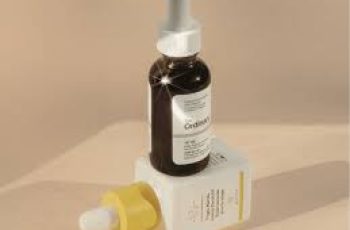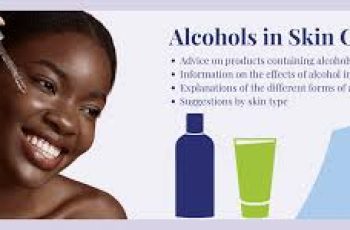
My Ongoing Battle With Hormonal Acne and a Surprising Skincare Discovery
Acne and I have been in an ongoing, emotionally exhausting, and sometimes downright comical battle for over a decade now. This isn’t a tale from someone who gets a few zits around finals or that time of the month and calls it “bad skin.” No. This is the story of someone who has experienced the full wrath of chronic hormonal acne—cystic, stubborn, deep, painful, and relentless. I started dealing with severe breakouts when I was 22, and now, years later, it’s become a consistent companion in my life. Not a welcome one, mind you, but one I’ve grown weirdly accustomed to.
My face has been a battleground of cysts, pustules, and red patches for so long that I honestly forget what it feels like to have totally clear skin. I’ve tried everything—diet changes, cutting out dairy and sugar (which was a whole other traumatic experience), expensive facials, drugstore cleansers, natural remedies, prescription medications, and every trendy serum TikTok told me to buy. I’ve had cysts that lasted for months—yes, literal months—living permanently on both sides of my chin like Ursula’s evil eel sidekicks from The Little Mermaid. At one point, I even got injections from my dermatologist to calm them down. Spoiler alert: they didn’t work. It felt like the acne had declared war on my face and was winning.
I won’t bore you with the entire saga (because believe me, it’s long), but if I were to give you the CliffsNotes version of my acne journey, it would be something like: “Tried everything short of setting my face on fire. Still dealing with acne. Now hyper-educated on skincare.”
And if you’re wondering—yes, I’m trying to conceive, which puts a whole new level of complication on the table. Many of the strongest acne treatments are off-limits due to their potential effects on fertility or pregnancy. So, I’ve been navigating this world of breakouts with limited tools, trying to find solutions that are effective but safe. Through it all, I’ve picked up an almost encyclopedic knowledge of acne products, routines, ingredients, and what does and doesn’t work for my skin.
So let’s talk acne patches. I genuinely love the idea of them. They’re often adorable—sometimes shaped like stars or clouds—and feel like a fun, whimsical way to treat something as frustrating as a breakout. There’s something comforting about sticking a cute patch on your pimple. It’s a little absurd, which is why it makes me smile. And when you’ve been crying about your skin for three days, smiling is actually pretty therapeutic.
Unfortunately, those little patches never really worked for me. My acne isn’t the kind that just sits on the surface of the skin, waiting to be sucked up by a hydrocolloid sticker. It’s usually deep, inflamed, and angry—more like a subterranean rage monster than a polite whitehead. So while I enjoyed the experience of using patches, I never got the satisfying results everyone else seemed to rave about.
That’s why I was intrigued—skeptical, but intrigued—when I came across Kiehl’s Truly Targeted Acne-Clearing Solution. It was making the rounds on TikTok as the new “liquid acne patch,” and people were singing its praises. I’ve seen my fair share of viral products that turned out to be duds, so I didn’t rush to buy it. But eventually, curiosity won, as it always does.
For starters, let’s talk about the name. Truly Targeted Acne-Clearing Solution is a bit of a mouthful, and “liquid patch” sounds like one of those marketing terms invented to make something old sound revolutionary. But Kiehl’s is one of those brands I’ve grown to trust over the years. They’re not new to the skincare scene. They’ve got history, credibility, and most importantly, I’ve used some of their products before with solid results. So I bit the bullet and bought a bottle for $30.
Now, what exactly is this liquid patch? It’s not an actual patch, like a sticker. You’re not placing something star-shaped over your zit. Instead, the formula creates a breathable, invisible seal over your acne once it dries. It’s somewhere between a serum and a spot treatment, and you can wear it under your sunscreen or even makeup. It contains 2% salicylic acid—an ingredient I’m very familiar with—which helps to exfoliate inside the pores and reduce inflammation. But the formula doesn’t stop there. It also includes 4% niacinamide to brighten and even out skin tone, and 0.2% licorice root extract to calm irritation and reduce redness, especially from stress-induced breakouts.
Kiehl’s claims that this solution will visibly reduce the color of your pimples in two hours, shrink their size within 24 hours, and help fade blemishes after four weeks of consistent use. Pretty big promises. I decided to put it to the test during a hormonal flare-up that was truly next-level. Mid-cycle, the lower half of my face was under siege. Painful nodules were forming on my chin and jawline, and I had a lonely but aggressive pimple forming just above my lip. Perfect timing.
The application was straightforward. You can use your fingertips to apply a drop directly to individual pimples, or apply a thin layer across affected areas. Kiehl’s specifically warns against rubbing it in too hard—just dab and let it dry. I tried both techniques: dabbing directly on some inflamed pustules and spreading a thin layer over the deeper cysts. I went in with low expectations—nothing short of prescription treatments usually makes a noticeable dent in these monsters.
But here’s where it got interesting: after the first night, I noticed a real difference. Two of the larger cysts that had taken up long-term residence on my chin—ones that even resisted steroid injections—felt smaller. Not gone, not healed, but noticeably less inflamed. The redness around them had diminished slightly, and they were a bit easier to cover with concealer the next morning.
After a few days of using the product both morning and night, I saw more gradual improvements. My skin didn’t transform overnight into a porcelain dream, but for the first time in a while, I felt like my acne was retreating rather than advancing. The individual pustules dried up more quickly, and the painful pressure beneath the surface of the cysts had eased. Even that annoying upper lip pimple flattened out without ever erupting into a full-on disaster.
Now, let’s be clear—this wasn’t a miracle product. I didn’t wake up one morning with flawless skin, and my hormonal acne didn’t suddenly disappear like it had been raptured. But for someone like me, that’s not the goal. I don’t expect perfection from skincare anymore. What I look for is progress, relief, and products that do what they claim without making my sensitive skin worse.
What impressed me most about Kiehl’s Acne-Clearing Solution was how it integrated into my routine. It didn’t dry my skin out or cause flaking like many treatments do. It sat well under my moisturizer and makeup, and I didn’t feel like I was walking around with a thick layer of medicine on my face. Most importantly, it didn’t trigger any irritation, which is a big deal for me. The inclusion of niacinamide and licorice root really seems to help with calming inflammation without compromising on effectiveness.
After four weeks of consistent use, the more active breakouts were significantly diminished. My chin still has a few stubborn cysts (as always), but overall, the skin is calmer, less angry-looking, and more even-toned. Some of the dark marks from older pimples are slowly fading as well.
In conclusion, while this little bottle didn’t change my life overnight, it has absolutely earned a spot in my skincare arsenal. If you deal with mild to moderate breakouts or even deeper cystic acne like mine, this could be worth trying—especially if you’re limited in what treatments you can use due to pregnancy or other factors.
To my fellow acne warriors out there: keep experimenting (safely), be patient with your skin, and try not to let the frustration wear you down. And if a product can make you feel even 10% better about your face when it’s acting up, that’s a win worth celebrating.


